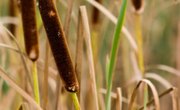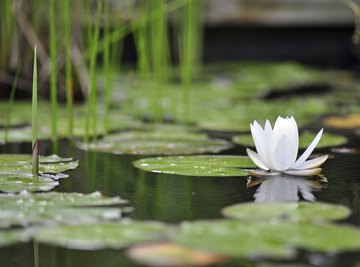
Aquatic plants prevent erosion along shorelines, as well as supply oxygen to other plants and fish. A wide variety of wildlife feed on the seeds and nectar of aquatic flowers, and water plants also provide a place for geese, ducks and other waterfowl to build their nests. Plants that live in the water also bring color and texture to the landscape in the wild and at home.
American Lotus
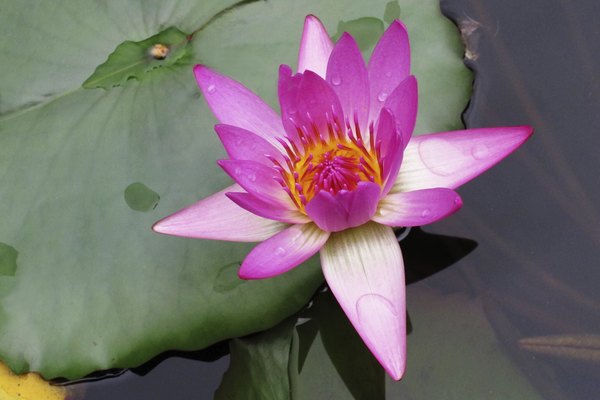
American lotus plants are found near streams, ponds, rivers and lakes in water up to eight feet deep. These aquatic flowers grow from Maine to Florida, west to Texas and north to Michigan. The blue-green leaves measure two feet or more in diameter. They can be bowl-shaped, rising above the surface of the water, or lie flat on top of the water.
The fragrant, yellow-white to pale yellow flowers bloom from June to September on stiff stalks rising above the leaves. Each multi-petaled flower is about ten inches across and has an upside-down, flat-topped, cone-like structure in the middle. Each flower opens in the early morning and closes late in the afternoon every day. American lotus is a hardy water plant, able to tolerate the heat in southern states and the cold in more northern latitudes.
Pickerelweed
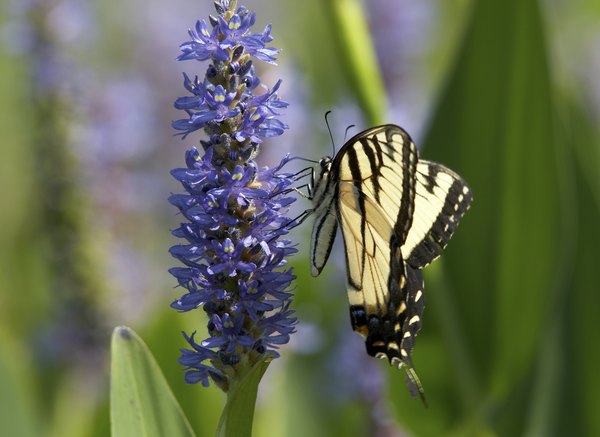
The vivid, blue-violet flowers of the pickerelweed plant brighten the shorelines of marshes and ponds. It forms in dense clusters from Minnesota to Texas and north Florida to New England. The one-inch flowers bloom on six- to eight-inch-long spikes from June to September, opening one at a time, starting at the bottom of the flower spike, notes the Lady Bird Johnson Wildflower Center. Each three-foot-long stem rises above long, shiny green, heart-shaped leaves that measure up to eight inches across. The nectar in the pickerelweed flowers attracts butterflies and bees, while waterfowl are drawn to the seeds.
Curly Pondweed
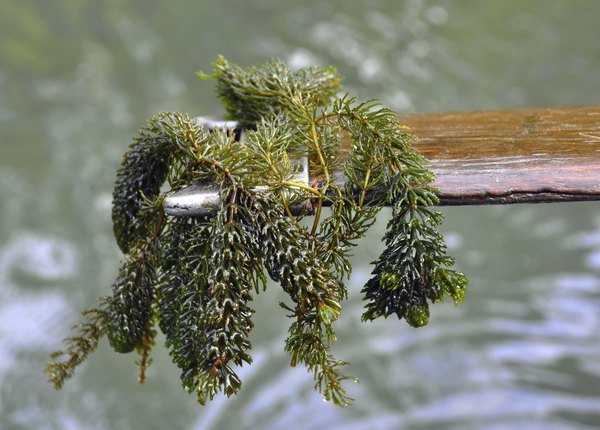
Curly pondweed is a submerged aquatic plant with stems up to 2.5 feet long. The leaves have a vein down the middle with secondary veins branching off it, much like a land-based plant. They are found in water up to ten feet deep, providing shelter for insects and small fish.
Curly pondweed plants increase the level of oxygen in the water, which is a vital part of a healthy, aquatic ecosystem. In the autumn, the plants sprout from dormant stem structures, called turions. During the winter beneath the ice, the plants grow rapidly, forming dense mats. They die back in late June, going into a dormant period when most water plants are growing.
Fragrant Water Lily
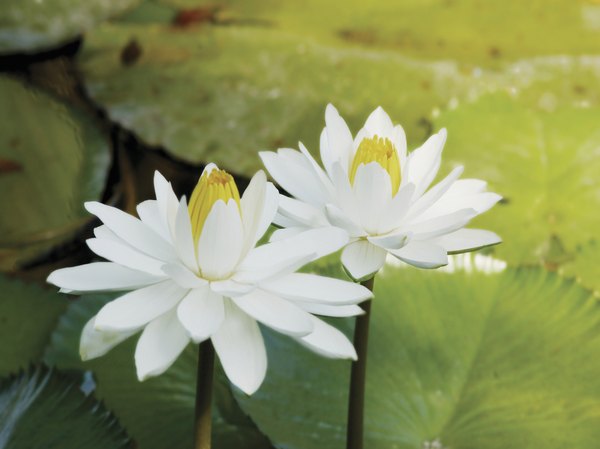
The fragrant water lily, also called American white water lily, is an apt water plant name. The two- to six-inch, pink or white flowers have a pleasant fragrance and float on the surface of the water, according to the Lady Bird Johnson Wildflower Center. The largest petals are on the outside, with the smallest petals near the golden yellow center. The flowers bloom in the early morning, closing at noon from March to October.
Fragrant water lilies grow in shallow water, but can be found in water up to eight feet deep in almost every state. The flat, round, bright green leaves are up to ten inches in diameter with a single, narrow slice missing.
Water Hyacinth
Examples of aquatic plants that were introduced as ornamentals and became invasive species include water hyacinth (Eichhornia crassipes). According to University of Florida's Center for Aquatic and Invasive Plants, water hyacinth was introduced to the United States in 1884. It has since become a freshwater weed, invading and replacing native plant communities around the world.
Water hyacinths have bulbous leaves that form in rosettes. The flowers of this aquatic plant are showy and lavender-blue, forming in a 12-inch spike above the leaves. Although it may be tempting to plant this aquatic ornamental, it is a prohibited plant in Florida and many other states in the United States.
References
About the Author
Marie Louise is passionate about her writing, bringing personal knowledge and experience on Complex Regional Pain Syndrome, chronic pain conditions, parenting, research, alternative medicine and animals. Her work appears on several different websites.
Photo Credits
ejkrouse/iStock/Getty Images
